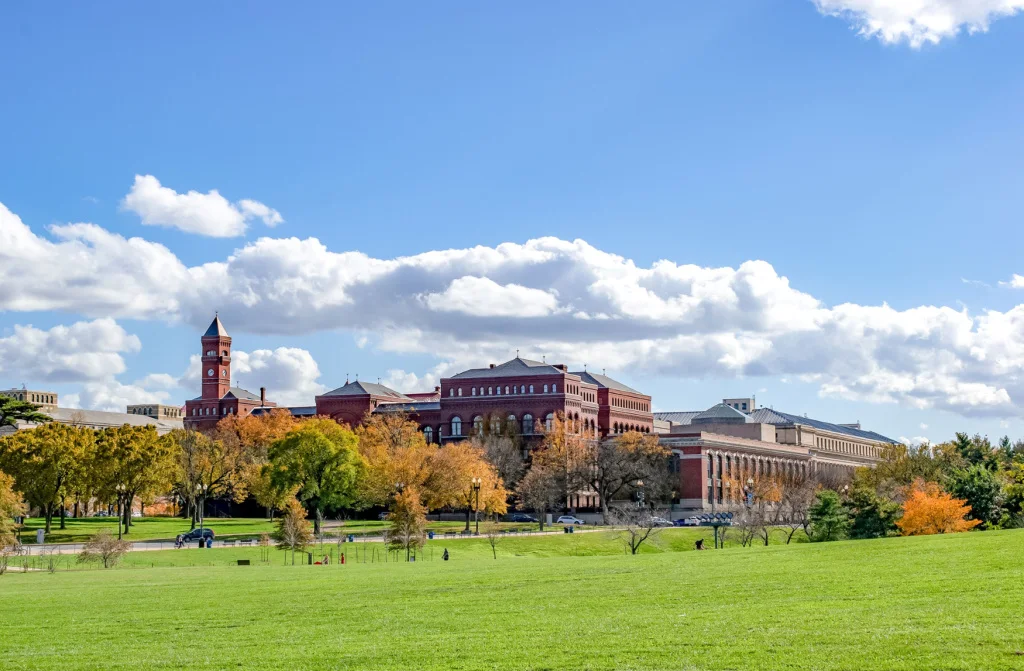The presence of a renowned university can significantly boost the local housing market, creating a lively and thriving real estate scene. The university’s effect on real estate happens because of the influx of students, faculty, and staff looking for places to live near campus. Universities also draw in businesses and services catering to the academic community, further stimulating local economic activity.
The university’s effect on the housing market is evident in the growing demand for rental properties and new housing developments. This demand can drive up property values and rental prices, benefiting homeowners and investors. As universities expand and improve their facilities, nearby neighborhoods often see revitalization, making them more appealing to potential residents. Understanding these dynamics can help everyone, from real estate investors to residents, make smarter decisions about the housing market in university towns.
The university effect on real estate

The university effect on the housing market is multifaceted: it drives up demand for rental properties, ensures steady and reliable rental income, and creates a diverse and resilient rental market. These factors combine to make university towns an appealing and strategic choice for real estate investment.
1. Increased Demand for Student Housing
A university in a town brings a significant influx of students, creating a substantial demand for student housing. While some students live in dormitories, many opt for off-campus living arrangements like rental apartments and houses. This surge in demand for rental properties drives the growth of the local rental market, presenting lucrative investment opportunities for landlords and property owners. The increased need for housing can lead to higher rental and lower vacancy rates, making it an attractive market for real estate investors.
2. Steady Rental Income
University towns often enjoy a stable and predictable rental market due to the consistent demand for student housing. Each academic year brings a new wave of students looking for places to live, ensuring a continual flow of potential tenants. Investors in these areas can benefit from reliable rental income, mainly if they provide well-maintained, affordable housing options that appeal to the student demographic. This steady stream of renters can lead to less turnover and more consistent cash flow, making university towns a dependable choice for property investment. Also, communities with established universities are known to be among the cities with the most renters.
3. Diverse Rental Market
Beyond traditional students, university towns also attract a variety of other residents, including faculty members, administrative staff, and researchers, all of whom require housing. This diversity within the rental market contributes to its stability and resilience, even during economic downturns. The presence of different types of renters means that demand for housing is not solely dependent on the student population, which can help buffer against seasonal fluctuations and economic changes. This diversified demand enhances the overall attractiveness of university towns for real estate investors.
University’s influence on property value

One of the aspects of the university’s effect on real estate is its influence on property values. They significantly influence them, but let’s see exactly how:
1. Economic and Property Growth
When a top-tier university sets up shop in a region, it’s not just about academics – it’s a game-changer for the local economy. Think about it: the university’s name carries weight, attracting bright minds, businesses, and investors. This buzz translates into a surge in demand for homes nearby. And guess what? Thanks to the steady stream of students, professors, and professionals flocking to the area, those homes become more valuable over time. Studies have shown that residences near reputable schools are more valuable than those without easy access to a top-notch education. According to a Redfin survey, properties in the United States that are close to highly regarded schools can sell for up to 77% more than those in other neighborhoods. So, if you’re eyeing long-term investments, the university effect on real estate is something to consider.
2. Neighborhood and Housing Demand
Picture this: the energy of campus life spills over into the surrounding neighborhoods, creating a vibrant atmosphere. Suddenly, cozy cafes, cool hangout spots, and many businesses appear nearby. Naturally, everyone wants to be part of the action, driving up the demand for housing in those areas. It’s like a chain reaction – the university’s influence extends beyond its borders, shaping the entire housing market.
3. Urban Revitalization and Community Growth
Here’s the thing about universities: they’re not just about classrooms and textbooks. They’re catalysts for change, especially in struggling urban areas. As students and faculty start looking for places to call home, neglected neighborhoods get a second chance. Urban planners and developers roll their sleeves, revamping infrastructure, sprucing up parks, and breathing new life into local businesses. Suddenly, those rundown areas are thriving, and property values are rising. It’s a win-win situation – the university flourishes, as does the community around it. Talk about the power of the “university effect on real estate”!
Economic and cultural impact

When a university settles in a neighborhood, it brings a wave of economic and cultural change. This transformation can be observed in various aspects of the local environment, particularly in the real estate and housing markets.
1. Development Opportunities
The need for more housing can spur new construction and development projects. Developers may build apartment complexes, student housing, and mixed-use developments to cater to the university population. This construction boom increases the housing stock, creates jobs, and stimulates local businesses.
2. Economic Boost and Job Creation
Universities are major employers, providing jobs for thousands of faculty, staff, and support personnel. This influx of employment opportunities boosts the local economy, as these employees spend their salaries on housing, dining, and other local services. Additionally, universities attract businesses such as bookstores, cafes, and tech startups catering to students and staff, further stimulating economic growth.
3. Cultural Enrichment
The presence of a university adds a unique cultural dimension to a neighborhood. Universities host various events such as lectures, art exhibits, and sports activities that are open to the public, enriching the cultural fabric of the area. The diverse student population combines cultures, languages, and perspectives, fostering a more inclusive and dynamic community. Local businesses often adapt by offering international cuisine and products, reflecting the global tastes of their new clientele.
Challenges and Opportunities

While the university’s effect on real estate brings numerous benefits, it also poses challenges. Increased property values and rents can lead to the displacement of lower-income residents, altering the neighborhood’s social landscape. Traffic congestion and noise are other common complaints from long-term residents who may feel overwhelmed by the influx of students.
However, these challenges also present opportunities. Universities and local governments can collaborate to create affordable housing solutions, ensuring that the benefits of economic growth are shared broadly. Community engagement programs can help integrate students into the neighborhood, fostering a sense of belonging and mutual respect.
Student housing vs. Family housing
University towns must balance the need for student housing with the need for family and non-student housing. Achieving this balance ensures a healthy and varied real estate market. If there’s too much student housing, families and other residents might struggle to find places to live. Conversely, students might have difficulty finding accommodations if there’s not enough student housing, which could impact the university and local economy.
Real estate investors can benefit from this balanced approach by including student and family housing in their portfolios. By investing in a mix of student apartments and family homes, investors can enjoy steady returns and reduce the risks associated with changes in student enrollment. This diversification helps ensure that if one market segment experiences a downturn, the other can provide stability.
Author’s conclusion
A renowned university in the area can boost the local housing market, making it lively and thriving. The university’s effect on real estate is impressive – it attracts a constant stream of students, faculty, and staff who all need living places. This demand fuels the growth of rental properties and new housing developments, often driving up property values and benefiting homeowners and investors alike.
But it’s not just about the numbers. The university’s effect on the housing market also brings a unique vibrancy to the community. Neighborhoods near the university have become more appealing, bustling with cafes, shops, and cultural events. This creates a dynamic atmosphere that draws in even more people, contributing to a cycle of growth and revitalization.
Of course, these changes come with their own set of challenges. Higher property values and rents can sometimes push out lower-income residents, and increased traffic and noise can be a nuisance. However, these challenges present opportunities for collaboration. Universities and local governments can work together to create affordable housing and engage the community, ensuring everyone benefits from the economic boost.
Balancing student housing with family housing is critical to maintaining a healthy real estate market. Real estate investors can thrive by diversifying their investments to include both housing types, ensuring steady returns and reducing risks. Ultimately, the university’s effect on the housing market shows how much it can shape and enrich its surrounding community, making it a vibrant place to live and invest in.











